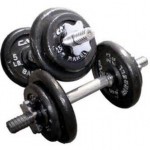 Fitness is not only about the body, but the mind as well. Try a few of these mental fitness moves to boost inspiration and motivation.
Fitness is not only about the body, but the mind as well. Try a few of these mental fitness moves to boost inspiration and motivation.
Race! That’s right, compete! For some reason, as adults we sometimes think we can’t or shouldn’t be competitive or admit wanting to win. However, striving to be the best or wanting to place in your age group, paying attention to time splits and wanting to pass others on the course is perfectly acceptable in athletic competition. Go ahead; keep time on a stop watch, push hard, announce wanting to finish first or set a personal record! Bringing some friendly competition into your exercise routine will peak interest and involvement as you’ll be less likely to miss a workout when your ego is on the line.
Hone leadership skills. Why not send an evite to your friends, family or co-workers inviting them to a specific location each week for an outing such as a beach walk or neighborhood bike ride. If you’re the leader, organizer or point person for the group, you’ll be guaranteed to show up! With a meager 15-20 minute time investment each week, you could send fun fitness email tips to club members every so often, send links to healthy recipes, offering fun home-made prizes for the most improved or most consistent participant each season or year will also maintain interest. Have some fun, keep it light hearted and on task. Host a wrap up pot luck at the park once a quarter or once a year, invite spouses and others to expand the group. The momentum that builds toward wellness will keep the group (and you) on track, as well as setting new fitness goals.
Take in a change of scenery. For example, pack your bike and heading to a neighboring town or city for your regular Saturday ride will eliminate exercise staleness. Carpooling with friends to a different area of town for our long run is also a fun option to mix up the mundane same old running route. Conduct a search online for information pertaining to the specific activity, including roads, and safety notes, then invite some friends and embark on a fitness focused road-trip. Having to refer to a map or notes on the new area, along with new and different scenery will keep you engaged and interested.
 Subscribe
Subscribe







